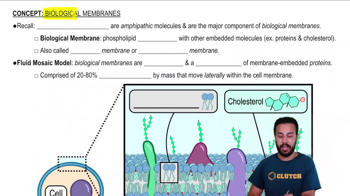Here are the essential concepts you must grasp in order to answer the question correctly.
Cutaneous Membrane
The cutaneous membrane, commonly known as the skin, is the largest organ of the body and consists of two primary layers: the epidermis and the dermis. The epidermis is made up of stratified squamous epithelium, which provides a protective barrier, while the dermis contains dense irregular connective tissue that supports and nourishes the epidermis.
Recommended video:
Epithelial Tissue Types
Epithelial tissues are classified based on the number of cell layers and the shape of the cells. Simple squamous epithelium consists of a single layer of flat cells, which is not found in the cutaneous membrane. Instead, the skin's outer layer is composed of stratified squamous epithelium, which is better suited for protection against abrasion and environmental damage.
Recommended video:
Identifying Types of Epithelial Tissue Example 1
Connective Tissue Composition
Connective tissues provide structural support and are categorized into various types, including loose and dense connective tissues. In the context of the cutaneous membrane, the dermis contains dense irregular connective tissue, which provides strength and elasticity, while the loose connective tissue is typically found in the hypodermis, beneath the dermis, rather than within the cutaneous membrane itself.
Recommended video:
Areolar Connective Tissue
 Verified step by step guidance
Verified step by step guidance Verified video answer for a similar problem:
Verified video answer for a similar problem:



 4:14m
4:14m